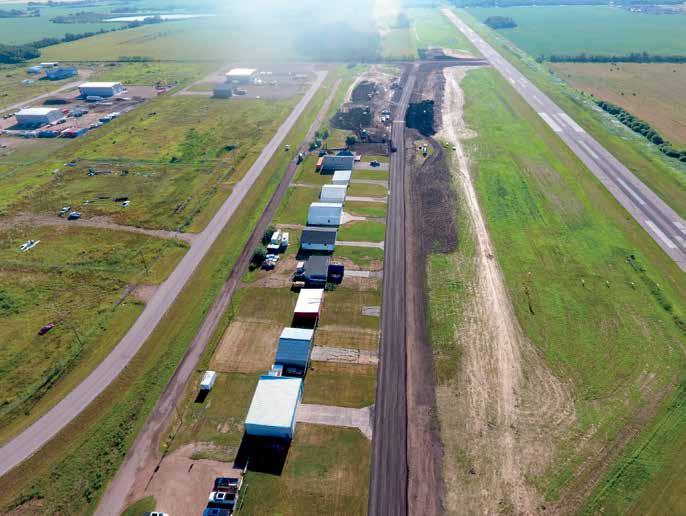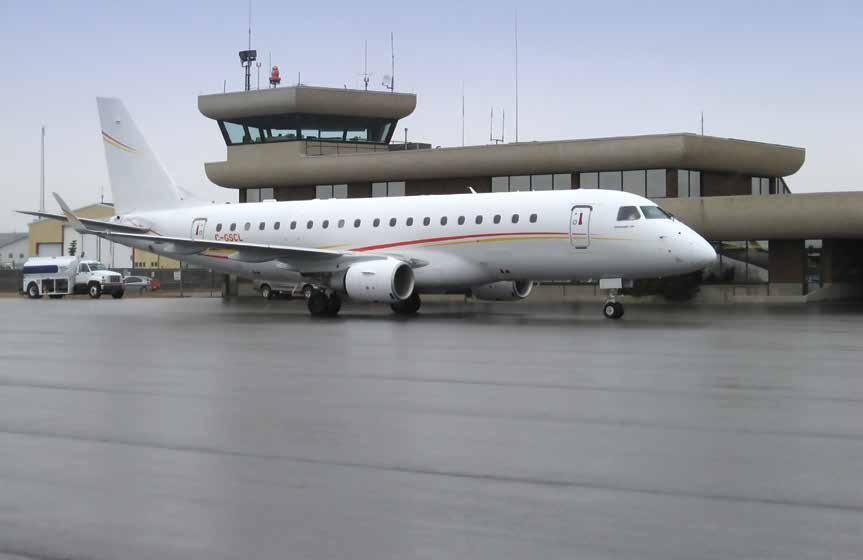

AMAA elevating Alberta's aviation industry
Navigating the complex world of airfield lighting
Airline passenger capacity on the rise











AMAA elevating Alberta's aviation industry
Navigating the complex world of airfield lighting
Airline passenger capacity on the rise









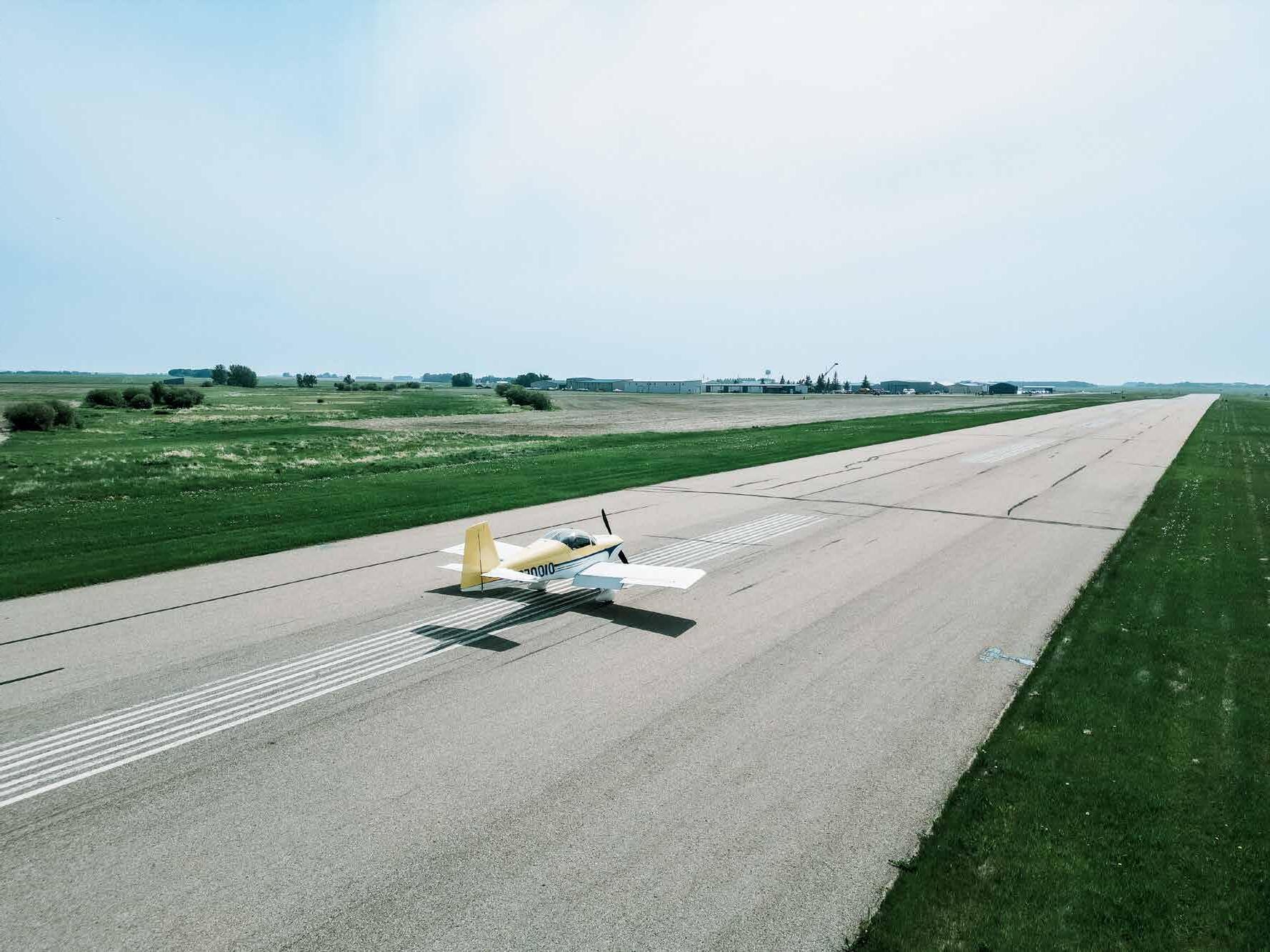
Discover new heights!
At the heart of Olds and Didsbury, find the OLDS/DIDSBURY AIRPORT. Ideally located approximately 40 minutes north of Calgary near Highway 2, with modern amenities, it blends convenience with small-town charm.
Experience the SUNDRE AIRPORT, a hub for regional tourism. Located just outside town, it gives easy access to popular destinations like golf courses, campgrounds, adventure spots, and great dining.

6 Message from the chair of the AAMA, William Stewart, AAE 8 Elevating Alberta's aviation industry: The growth and impact of the AAMA 12 Airport ownership models:
Ownership models should be tailored to fit each airport rather than a one size fits all 16 Illuminating challenges:
Navigating the complex world of airfield lighting 22 Taking flight: Airline passenger capacity on the rise 25 Wings and wildlife:
Navigating Alberta's wildlife challenges at airports
28 Red Deer Regional Airport is ready for takeoff! 34 Wetaskiwin Regional Airport: Celebrating 50 years in 2024
37 Index to advertisers
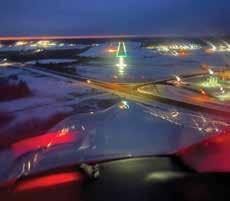


Published by: DEL Communications Inc.
Suite 300, 6 Roslyn Road Winnipeg, MB R3L 0G5
www.delcommunications.com
President & CEO: DAVID LANGSTAFF
Managing Editor: SHAYNA WIWIERSKI shayna@delcommunications.com
Sales Manager: DAYNA OULION dayna@delcommunications.com
Advertising Account Executives: COLIN JAMES MIC PATERSON
Contributing Writer: LISA KOPOCHINSKI
Production services provided by: S.G. Bennett Marketing Services
Creative Director / Design: KATHLEEN CABLE
© Copyright 2024
DEL Communications Inc.
All rights reserved. The contents of this publication may not be reproduced by any means, in whole or in part, without prior written consent of the publisher.
While every effort has been made to ensure the accuracy of the information contained herein and the reliability of the source, the publisher in no way guarantees nor warrants the information and is not responsible for errors, omissions or statements made by advertisers. Opinions and recommendations made by contributors or advertisers are not necessarily those of the publisher, its directors, officers or employees.
Publications mail agreement #40934510 Return undeliverable
Canadian addresses to:
Communications Inc.
Suite 300, 6 Roslyn Road Winnipeg, MB R3L 0G5 Email: david@delcommunications.com
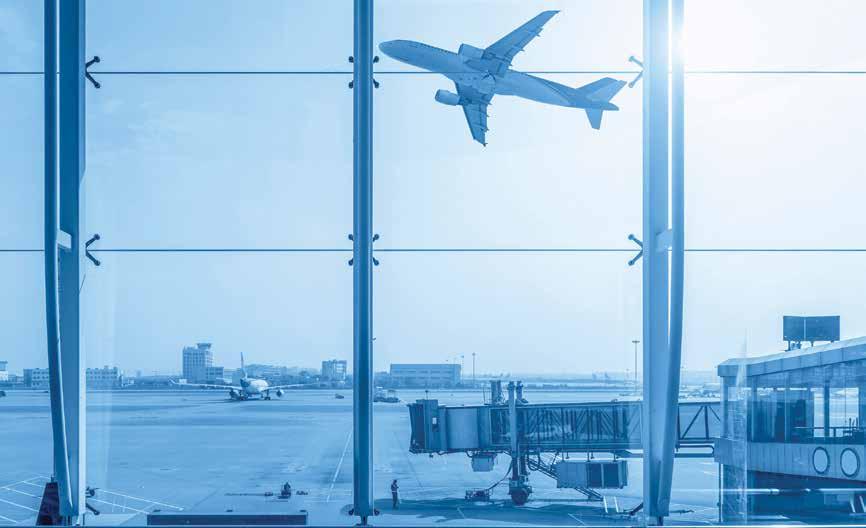
PavixCCC100 is patented dual crystalline waterproofing product that has been proven to penetrate into the surface of green or cured concrete to fill and seal pores and capillary voids, and cracks up to 1/16” creating a permanent protective zone within the concrete substrate.
Once concrete is treated, this proven technology will prevent water from penetrating through the protective zone and causing associated damage, such as freeze-thaw cracking, reinforcing steel corrosion, and chloride ion penetration. One application of the PavixCCC100 crystalline penetrating sealer will waterproof and seal the surface, as the hygroscopic crystals continuously seek out the vapor within the substrate.
FIELDS OF APPLICATION:
• Airport Runways • Aircraft Parking • Tunnels • Parking Lots
• Sea Ports • Airport Taxiways • Bridges • Concrete Roads
• Highways • Buildings • Walkways and more!






he Alberta Airports Management Association (AMAA) has wrapped another year and I have to say, this has been the most successful one yet!
Over the last year, the AAMA has really concentrated on advocacy for small and regional airports across Alberta. We have met with both provincial and federal government representatives in an attempt to ensure our members are being treated fairly and receiving the support they need. We have worked alongside our partner associations such as the Regional Community Airports of Canada to ensure that your voices are heard when decisions are being made in Transport Canada that may have an impact on your operations.
We have completed a study with commercial member HM Aero to show the economic and community impact of small and regional airports in Alberta. Armed with
this knowledge, we are now moving forward with plans to lobby the Alberta Government for improved funding towards both capital and operating expenses.
The AAMA is also working with industry experts to develop a strategy to accomplish our goals while aligning our efforts with likeminded provincial and municipal organizations. We want to see small and regional airports not just survive but thrive and we feel that we are in a position to make that a reality.
The stage is set for the AAMA to make a major change for our members and we’re excited to do it.


“We are the
voice for a thriving and valued provincial network of community airports.”
The Alberta Airports Management Association (AAMA) was formed to present a forum and membership opportunity for airport operators to resolve common issues and problems. The Alberta Airports Management Association (AAMA) is composed of airport operators and companies/individuals associated with airport equipment, supplies and consulting. Member airports can expect to operate with minimal delays based on timely and accurate information provided by the association through direct consultation, newsletters, annual meetings, maintenance seminars and dialogue with other member airports.


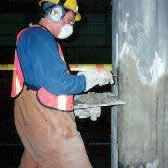

Put our extensive line up of time-tested products and 97 years of on-the-job experience to work on your jobsite. As a family-owned company since 1926, W. R. MEADOWS has invested in developing solutions to bring projects in on time, on budget and with quality products manufactured locally in Canada.
Experience Counts!
Tack Oil
Cold-Pour Crack Filler
Hot-Pour Crack Sealant
High Performance Cold-Patch
Concrete Curing Compounds
Asphalt Maintenance
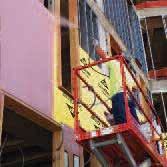
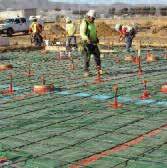




W. R. MEADOWS is the exclusive Western Canadian dealer of Marathon pavement maintenance equipment. We are also an authorized distributor for Deery American and Cascade Asphalt Sealer/Ennis Paint.
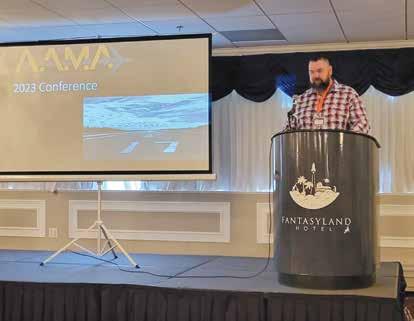

The Alberta Airport Management Association (AAMA) has transformed from a modest group of airport enthusiasts into a thriving community of aviation professionals, thanks to the dedication and passion of its members.
The AMAA was initially formed to present a forum and membership opportunity for airport operators to resolve common issues and problems. Membership is composed of airport operators and companies/individuals associated with airport equipment, supplies, and consulting.
Wendy McArthur, airport management coordinator for the City of Wetaskiwin, notes the substantial growth in registered airport members and highlights the AAMA as an invaluable resource. The association serves as a hub for advice, information, and technical details, filling the gaps when individuals encounter challenges in their roles.
“I have seen [membership] grow, especially with our registered airport members. It’s a great resource for advice on information and technical details, or stuff where you don’t know where to look,” says McArthur, who is also on the board of the AAMA. “[As an airport management coordinator], we get a lot of calls for stuff, even myself, I get calls from tons of people asking things like ‘hey, have you done this or do you know how to do this?’ and if I don’t, then I say to check the AAMA as someone there has got to know.”
McArthur goes on to emphasize the power of networking within the association, creating connections that often lead to the sharing of vital information or guidance. The association not only provides regulatory insights, but also acts as an advocate for smaller airports, ensuring their unique needs are recognized within the industry.
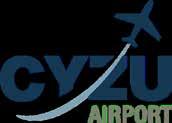


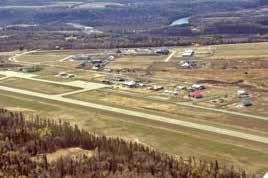

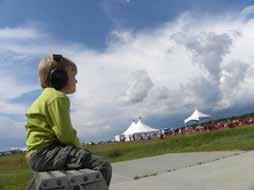
Supporting energy, forestry, and civilian aviation
NavCanada flight service onsite
Runway: AGN IIIA 5797’ x 100’
Medium intensity ARCAL Lighting
Focused on new airport development and opportunities
Runway 11-29 is prepping for a $7 million resurfacing and enhanced lighting project to support increased annual aircraft movements, Alberta Wildfire, and Alberta Health
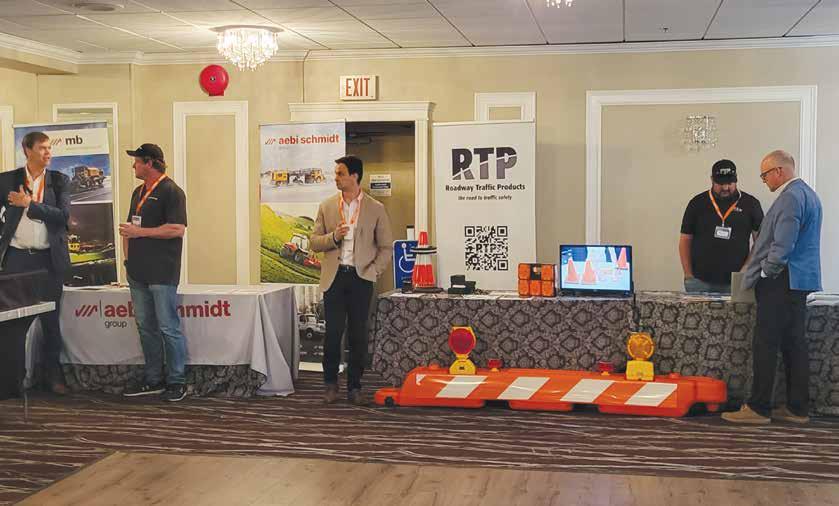
William Stewart, chair of the AAMA and director of terminal services for the Grande Prairie Airport, reflects on the association's journey of growth and its evolving role in supporting smaller airports. Stewart, a member of the AAMA for nine years, notes the steady increase in membership over the years, attributing it to the association's outreach efforts and the recognition of its value by municipalities.
A significant aspect of the AAMA's mission lies in its advocacy for smaller airports, which often face unique challenges and require specialized support. Stewart emphasizes the importance of providing municipalities with resources and information about the benefits of AAMA membership, particularly through presentations and outreach efforts targeted at rural municipalities.
“Prior to that, the airport managers within the municipalities were reaching out to us and that showed us that we needed to reach out to the really small airports

that we hadn’t necessarily reached out to before,” says Stewart. “As board members, or AAMA members who belong to other associations within their municipalities, just getting word out about what we offer and that type of thing is important.”
The group recently presented at the Rural Municipalities of Alberta Fall 2023 Convention, where they highlighted the wealth of resources and expertise available through the AAMA. The convention took place November 6-9, 2023 at the Edmonton Convention Centre and the event and the response to the presentation was overwhelmingly positive, with several municipalities expressing interest in
joining the association. To facilitate this, the AAMA offered complimentary membership for the remainder of the year, further incentivizing participation.
“The feedback we got was very positive. I think the majority of municipalities want to support their airports and have good intentions and a lot of the time just lack the resources or information of what they need to do,” says McArthur, who adds that they are also creating an airport operator guide, which will be a resource for smaller municipalities and airport operators who can reference it for current information. “We are hoping to have it ready to come out in time for the airport studies. The last study on airports was in 2003, so it would be fantastic to have relevant information.”
Adding to this, a core strength of the AAMA lies in its ability to serve as a comprehensive information hub for airport operators and municipalities alike. Stewart underscores the importance of access to accurate and relevant information, particularly for smaller airports that may lack prior experience in airport management. By leveraging the collective knowledge and experience of its members, the AAMA provides invaluable guidance and support to navigate the complexities of airport operations.
In addition to serving as an information resource, the AAMA fosters a sense of community among its members, offering a platform for networking and collaboration. Since the aviation industry is quite small, it’s important to have a supportive network of peers to turn to for advice and assistance.
Looking ahead, the AAMA remains committed to advocating for the interests of Alberta's airports and providing tailored support to its members. Currently, the association is undertaking a major study on the financial and economic impact of Alberta airports, with the aim of using this data to advocate for additional support for smaller airports.
Membership in the AAMA is open to anyone with an interest in supporting Alberta's airports, including airport operators, municipalities involved in airport operations, and commercial members serving the aviation industry. The association hosts their annual conference in Edmonton from June 10-14, 2024 and it provides members with an opportunity to connect, learn, and exchange ideas.
As the AAMA continues to grow and evolve, its dedication to supporting Alberta's airports remains unwavered. Through its advocacy efforts, provision of resources, and fostering of collaboration, the AAMA stands as a cornerstone of the province's aviation community, ensuring that all airports, regardless of size, have the support they need to thrive.
“We invite anyone interested in joining our association. We do cater towards airports, however we do invite municipalities that may be involved in airport operations, whether their own or neighbouring communities where they are a contributor or sit on the committee,” says Stewart. “We also invite commercial members who might serve our airport members so we can bring the two of them together.”

should be tailored to fit each airport rather than a one size fits allBy Lisa Kopochinski

The Alberta Airports Management Association (AAMA) —the voice for a thriving provincial network of regional airports across the province—was formed to present a forum and membership opportunity for airport operators to resolve common issues.
With its membership consisting of smaller regional airports—many of which are municipality and regionally owned—there are different benefits depending on the ownership model.
Wendy McArthur is the airport management coordinator at Wetaskiwin Regional Airport. She says each airport is unique with respect to its use of location and various other factors.
“The ownership model should be
tailored to fit each airport rather than a one size fits all. Each of the different ownership models have benefits and challenges to consider,” says McArthur. “For example, a municipality-owned airport has access to heavy equipment needed for winter maintenance activities that is much more cost effective then contract or private services. So, it’s a great fit for community airports and especially certified airports as regulatory-required maintenance needs can be met fairly cost effectively.”
She adds that the municipality ownership model also qualifies for different sources of grant funding for some airport infrastructure. While the infrastructure and operating costs remain relatively minimal, grant funding plays a crucial role in
providing essential financial support to municipality-owned airports. These airports operate within the same limited funding pool allocated for other municipal services and infrastructure, highlighting the significance of grant assistance in sustaining their operations.
McArthur says that this ownership model can create challenges of being expected to fully recover operating costs and infrastructure asset management best practices being overlooked as the funding simply isn't available.
“This municipality ownership model can also be slow in reacting to industry changes or new revenue opportunities in comparison to other ownership models as the decision-
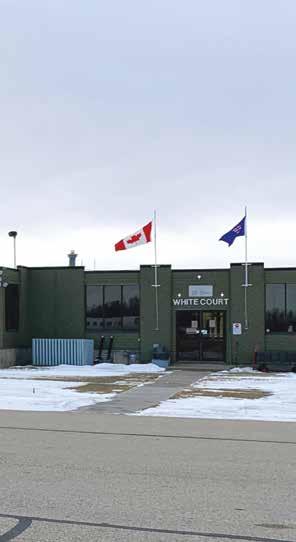
“An ownership model should be tailored to each airport’s specific needs to provide the most benefits.”
—Wendy McArthur
making process can be slower,” she says.
Currently owned and operated by the City of Wetaskiwin, the Wetaskiwin Regional Airport has been at its current location for 50 years. During this time, the airport has utilized various ownership and operating models. As the use and operations of the airport evolved, so did the suitable ownership and operating models. McArthur explains that initially the airport was created as a private landing strip to meet the needs of what is now the Reynolds Alberta Museum. As the private
collection was donated and the museum created, the attached runway and property designated for aircraft operations (now the Wetaskiwin Regional Airport) saw changes to the ownership and operating models evolving with the changing needs and uses of the airport.
Due to the airport being in the builtup area of town, it is certified—and with the regulatory requirements of a certified airport—the municipality has the equipment resources to provide winter maintenance. In recent years, she says the City has
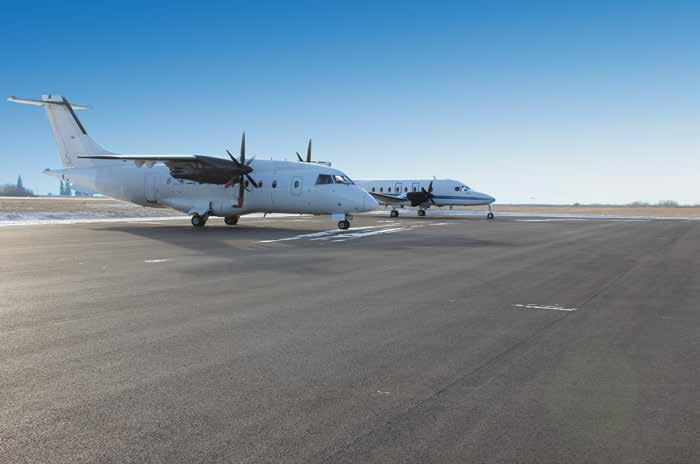

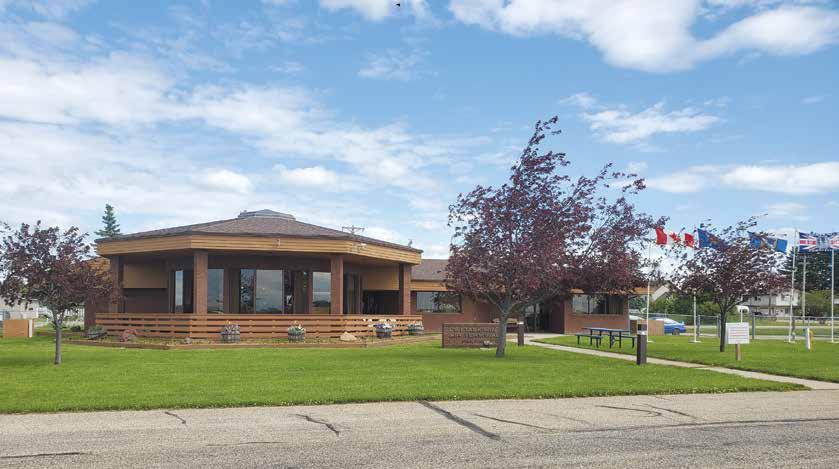
issued expressions of interest for operating the airport.
“However, at the time of this process, there were no cost savings found through this process and the airport remained operated by the City,” she adds. “City council has still questioned if this is the best operating model and may review the model in the near future to ensure it’s still the most beneficial.”
Ben Crooks is an aviation planning consultant at HM Aero and provides support to the Whitecourt Airport (CYZU), which has been owned and operated by Woodlands County since its transfer from the Province of Alberta in 1995.
Operated by three full-time county employees and overseen by an airport manager that reports to the director of infrastructure services, the county council serves as the governing body, and an airport
advisory committee supports council in its decision-making functions. The airport’s largest source of revenue is land lease agreements with tenants such as Alberta Wildfire, aviation businesses, and private entities.
“Revenues are indirectly generated for privately owned lands at the airport through property taxes, despite the airport not receiving lease payments,” says Crooks.
Crooks adds that Woodlands County does not charge airport improvement fees as it doesn’t handle scheduled passenger air services. The airport has limited non-aeronautical revenues, although a study is underway on the feasibility of developing surplus lands for highway commercial uses. The excess of expenses over revenues is funded by Woodlands County as the airport’s owner, and the Town of Whitecourt contributes $40,000 annually.
Crooks adds that the County has prioritized efforts to improve its operation of the airport, securing certification in 2017, and completing initiatives such as an airport education session for council members, preparing infrastructure condition assessments, and engineering design exercises.
“There is also a strategy for off-airport land use compatibility, revisions to how on-airport development is approved, and ongoing staff training and operational audits,” he says.
Crooks says when it comes to the topics of ownership, governance, and operations, these must be evaluated on a case-by-case basis, as the most appropriate model is influenced by factors that are unique to each facility.
Examples of factors that influence the recommended ownership model include the airport’s financial
“Community and regional airport owners across Alberta are largely cognizant of the economic and social value that their facilities yield.”
—Ben Crooks
performance, the service needs of its primary users, and the degree of control the local municipality wishes to hold. Also, more than 80 per cent of Alberta’s smaller community and regional airports are municipally owned, with various approaches taken to their administration and operations.
Additionally, more than two-thirds of smaller airports are operated by municipal Public Works Departments or other similar structures.
“This is generally the easiest model to implement for municipalities and achieves efficiencies in the use of staff and equipment, but commonly leads to trade-offs in the allocation of sufficient resources to the complexities and service requirements of airport operations,” says Crooks.
In select cases, independent entities have been established such as the Red Deer Regional Airport Authority, Slave Lake Airport Services Commission, and the Grande Prairie Airport Commission with dedicated mandates to advance these airports—either with or without financial and governance support from their local municipalities. Examples of factors that influence the recommended ownership model include the airport’s financial performance, the service needs of its primary users, and the degree of
control the local municipality wishes to hold.
“More than 80 per cent of Alberta’s smaller community and regional airports are municipally owned, with various approaches taken to their administration and operations,” says Crooks. “Over two-thirds of smaller airports are operated by municipal Public Works Departments or other similar structures. This is generally the easiest model to implement for municipalities and achieves efficiencies in the use of staff and equipment, but commonly leads to trade-offs in the allocation of sufficient resources to the complexities and service requirements of airport operations.”
Income streams leveraged by airports are influenced by several factors such as primary users, the competitive strategy taken to its market positioning (such as offering lower lease rates to attract airside development), and its ability to collect revenues. Unstaffed airports, for example, struggle to log aircraft movements for billing landing fees.
“To the extent possible given local market conditions and the role(s) served by a given airport, taking a diversified revenue generation approach that integrates aeronautical and non-aeronautical is prudent,” says Crooks.
This has led to numerous airports pursuing non-aviation sources of revenue— ranging from agricultural leases to industrial and commercial development—as a means of diversifying from being reliant solely on the aviation industry which is characterized by cyclical periods of strength and weakness.
He adds that the majority of Alberta’s community and regional airports do not support scheduled passenger air services and are hindered in their ability to collect airport improvement fees, leading to a focus on revenue generation through airside and groundside leasing, aircraft landing and parking fees, fuel services, and service cost recoveries.
Perhaps, McArthur sums things up best when she says there are benefits and challenges with all airport ownership models and no “one size fits all” model.
“Due to the complexity of operations required for a wide range of services airports offer, an ownership model should be tailored to each airport’s specific needs to provide the most benefits,” says McArthur.
Crooks adds that community and regional airport owners across Alberta are largely cognizant of the economic and social value that their facilities yield and are wellintentioned in meeting the needs of key users, such as Alberta Health Services, Alberta Wildfire, and other aircraft operators.
“Numerous owners go a step further and see their airports as tools for economic development and growth,” says Crooks.

Alberta's airports play a crucial role in connecting communities, facilitating economic activities, and ensuring smooth operations for various industries. In recent years, several airports in the province have made significant strides in upgrading their lighting systems, with a particular focus on transitioning to energyefficient LED technology.
The Fort McMurray International Airport (YMM), shares the airport's commitment to being Northern Alberta's airport of choice. With a 7,503-foot runway, the airport serves flights to major cities like Edmonton, Calgary, and Toronto. Additionally, it supports domestic flying for northern
communities, facilitates small airlines to Fort Chipewyan and fishing lodges, and hosts helicopter activities related to the oil sands. Fort McMurray also boasts a flight training school.
Jeff Vader, manager of airport maintenance, says that the airport upgraded their runway lighting from incandescent lights to LED prior to 2020, and in 2023 they upgraded the taxiways and runway guard lights to LED. The biggest motivating factors for this change was energy efficiency and reliability.
“There’s an energy savings for it and basically some of the incandescent parts are getting harder and harder to find,” says Vader. “Everyone is moving in the direction of LED as it cuts down
on your electrical bill and it cuts down on the amount of time your electrician has to spend out there replacing bulbs.”
The Lac La Biche Airport (CYLB) upgraded their lighting system to LED in 2006. The airport, which services various flights including medevac and wildfire tankers, made the switch primarily for the substantial energy cost savings.
Barry Feledichuk, urban transportation and airport supervisor at Lac La Biche County, says that there is a significant reduction in power consumption, with LED lights using only 10 watts per light for a total of 580 watts compared to the previous incandescent lights' 100
to 150 per light for total of 6900 watts. The long-term benefits of LED lighting, including lower energy costs, increased efficiency, and extended lifespan (50,000 hours compared to 1,000 to 2,000 hours for incandescent bulbs), make it a cost-effective choice for Lac La Biche.
Despite the advantages, Feledichuk notes a couple challenges with their LED lighting system, which is different from the industry-standard types used at other airports across Canada.
“One of the major cons with LED that we have is that they are set up like a Christmas tree. When one light goes out, every light on the string goes out. The way our runway is set up, we have two separate runs of lights, so worst case scenario, when a light is taken out, every second light will work,” says Feledichuk. “The major challenge is trying to figure out which light is burnt. We test the lights with 12-volt batteries; we will open them up and touch them to a 12-volt battery and if they light up then it’s good. If we can’t find the break then we have to jump the A line across the runway to shorten the circuit and then find out from there where it’s broken.”
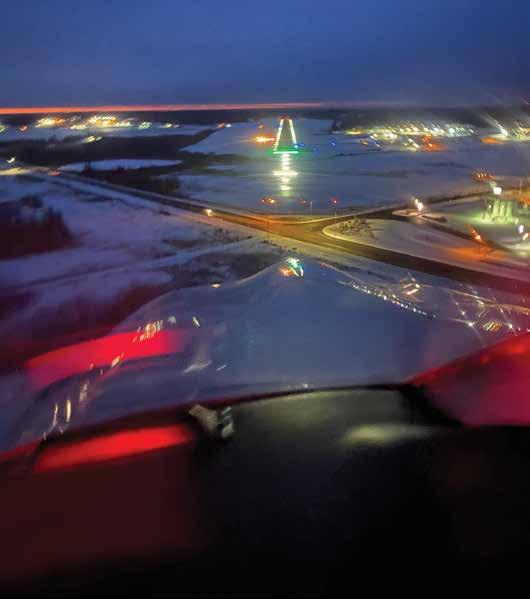
Pierre Gauthier, airport manager for the Slave Lake Airport (CYZH), also mentions that while LED lights offer exceptional clarity and brightness, the current supply chain issues have hampered their ability to maintain and replace essential components. The airport's struggle to receive

parts within a reasonable timeframe has raised concerns about potential disruptions in nighttime operations. He expresses frustration with the prolonged wait times, citing the impact on airport certification regulations. The situation has forced

The long-term benefits of LED lighting, including lower energy costs, increased efficiency, and extended lifespan, make it a cost-effective choice for airports.

the airport to consider alternative measures, such as redistributing bulbs from one location to another to maintain compliance.
“Running a certified airport, and it might pertain to registered airports as well, if you have more than two lights out in a row in a runway then you are technically supposed to close the runway if you cannot get enough lights in place,” says Gauthier. “We would probably have to skip or pull a bulb from another light and put it in a different location so you only have one out in a row.”
One of the crucial power sources, a backup to the main regulator, has become a significant point of concern. The airport has been awaiting this vital component for over nine months, emphasizing the potential consequences should the main regulator fail or if multiple lights are damaged. The lack of stock for replacement parts could force the airport to close its runway for nighttime operations.
The challenges intensified with the onset of the COVID-19 pandemic. While initial disruptions were understandable, Gauthier notes that the situation seems to have worsened over time instead of improving. He expresses frustration over the lack of clear answers regarding the delays.
One of the major suppliers of airport lighting is ADB Safegate Canada Inc. The company, who services over 2,500 airports worldwide, has been distributing airfield lighting for over 100 years. Russell Mueller, national sales manager for Canada for ADB Safegate Inc., has been with the company for 34 years and has seen the evolution of lighting in airports from standard incandescent lighting to halogen technology to LED. He says that the lights found in airport runways are specific to that application as they require a specific brightness output at a specific brightness level.
He says that he is very familiar with the supply chain issue for the parts associated with the LED lights.
“As the one in the chain who is often asked to help solve these delivery issues for our customers, I’m certainly getting tired of hearing the COVID excuse and we still hear it quite a bit… [with that being said], we are still being impacted by what our suppliers’ response to the COVID situation was,” says Mueller. “A lot of companies lost very experienced employees through layoffs, retirements, and plant closures. And other companies had to have a hard look at their production capabilities and focus on the products that they were making with the greatest volume of profit. We are still seeing some of these impacts on our production lines and parts supplies today.”
Mueller highlights that the supply challenge primarily resides in the intricate glass lenses of LED lights.

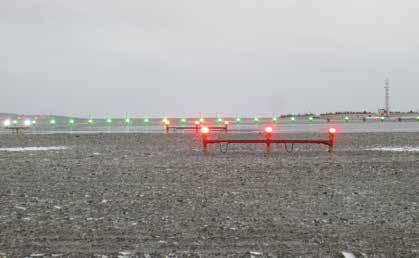
Despite ADB Safegate's position as a global leader in airfield lighting, the company does not manufacture its own lamps or glassware for these specialized lenses. The complexity of manufacturing becomes apparent as Mueller says that that only two manufacturers specialize in airfield lighting-specific glassware in North America, with one established in 1861 and the other in 1926.
The process of crafting these lenses demands a wealth of experience and precision due to the tight tolerances required for focusing light beams in a very specific manner. The challenges intensify as these factories, with continuous glass furnaces, struggle to attract new employees, a situation exacerbated by departures during the COVID pandemic and retirements in recent years.
Mueller expands on their proactive approach to address these challenges. The company is actively seeking newer and alternative suppliers for this specialized glass, recognizing the limited interest in such a business model among potential manufacturers. Despite scouring the global market for suppliers, options remain scarce. In response, they are exploring
the redesign of the fixture itself, aiming to enhance self-sufficiency in production and reduce dependence on external glass manufacturers.
Supply chain issues aside, the LED lights have provided phenomenal lighting solutions to airports, both in Alberta and worldwide.
“The lights are amazing. The
feedback from the pilots, they can’t believe it; there is no mistaking the airport now,” says Gauthier. “The lights are crisp and vibrant, and you can really distinguish the airport from maybe Main Street in certain towns. Sometimes it’s hard to tell between Main Street and the runway with certain towns, so that’s definitely good feedback.”

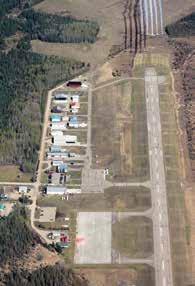

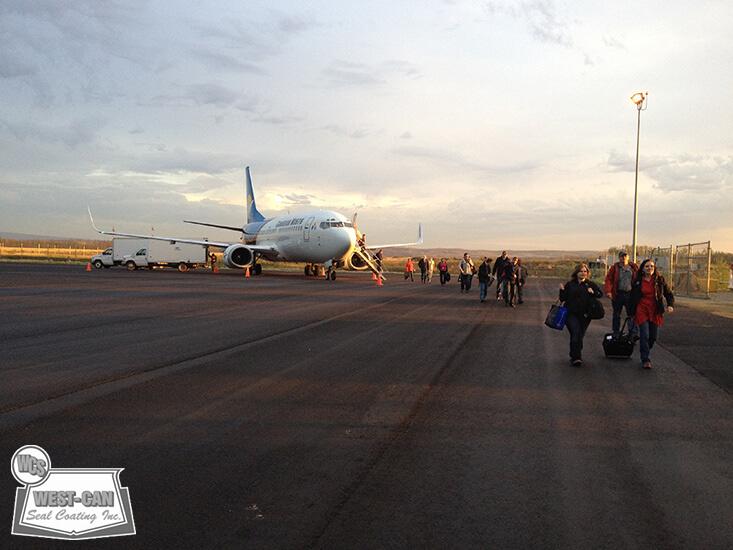


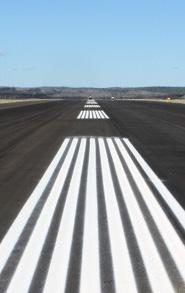
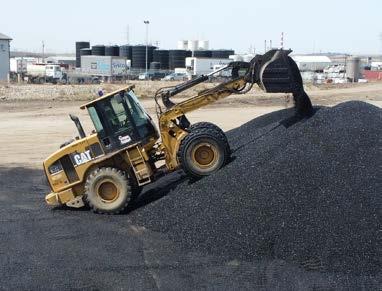

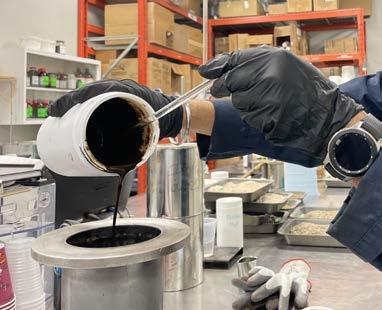
 By Lisa Kopochinski
By Lisa Kopochinski
During the pandemic, passenger activity at many airports decreased substantially, but is now slowly showing signs of improvement. Passenger traffic and services at many airports across Alberta increased in 2023, but still have a long way to go for 2024 and beyond.
At the Medicine Hat Airport—with its capacity to serve approximately 100 outbound scheduled air passengers at one time, and more than 75,000 passengers in 2019—the pandemic severely devastated passenger activity levels.
“This mirrored the impact felt at other similar-sized regional airports across the country,” says Logan Boyd, airport manager at the Medicine Hat Airport.
“During the depths of the pandemic, scheduled air service was halted entirely for a period of three months. The financial toll was significant as scheduled air service accounts for a large percentage of the airport’s total revenue.”
Boyd says 2022 was also a very
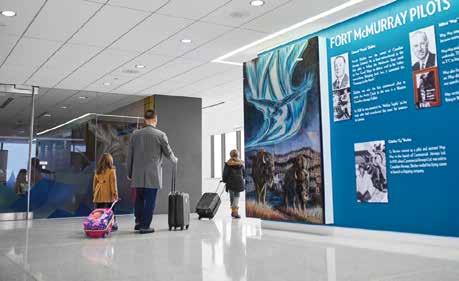
Top: This past December, the year ended with 360,000 passengers coming through Fort McMurray International Airport. Photos courtesy of the Fort McMurray International Airport. Inset: At the Fort McMurray International Airport, passenger traffic has also risen—albeit slowly in 2023— and is still far below pre-pandemic levels, which is challenging the airport’s revenues.
difficult year, which was one of the factors why the airport enjoyed a 40 per cent increase in passenger activities in 2023. He adds that they expect activity levels to improve incrementally over the next few years, as regional air service continues to rebound from pandemic lows.
At the Fort McMurray International Airport, passenger traffic has also risen—albeit slowly in 2023— and is still far below pre-pandemic levels, which is challenging the airport’s revenues.
Fort McMurray Airport Authority CEO
“We expect activity levels to improve incrementally over the next few years.”
— Logan Boyd
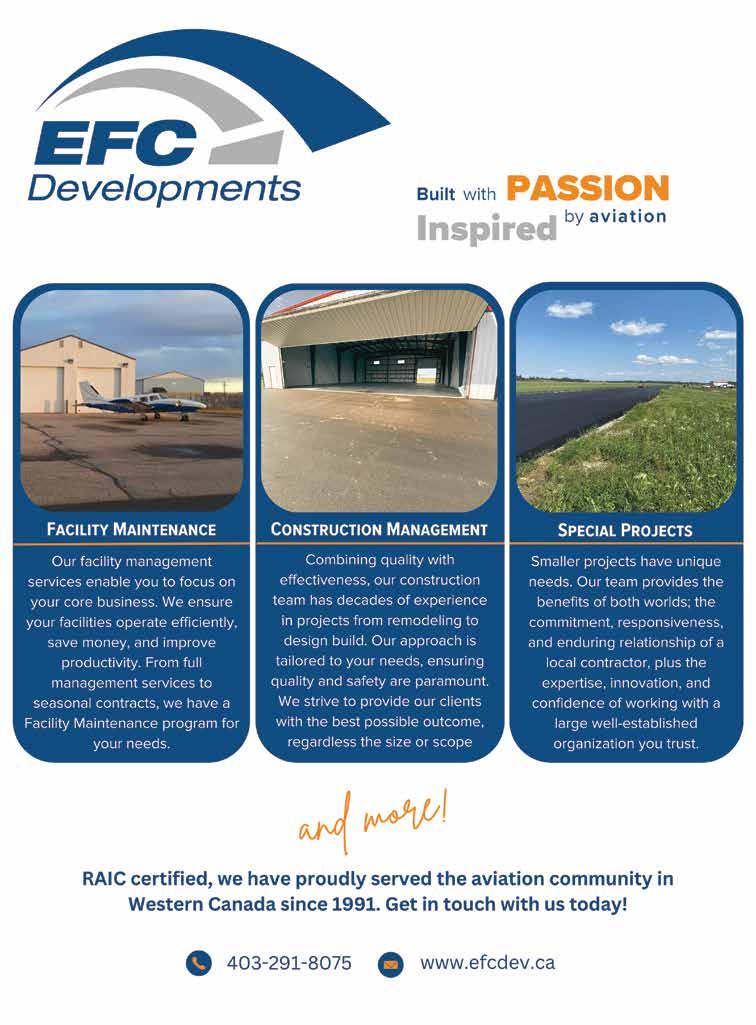
“We are projecting a three per cent growth based on current flights offered.”
— Jessica Lipton
Denean Robinson told Fort McMurray Today recently that she remains optimistic that 2024 will bring its own successes but that they’re still challenged by not having their passenger numbers back to where they need to be.
This past December, the year ended with 367,000 passengers coming through Fort McMurray International Airport. With expectations that this will rise to 380,000 passengers this year, this number is still significantly lower than the annual figure of 595,000 when restriction and lockdowns began. Moreover, business travel continues to languish, with a growing number of companies
favouring remote meetings over inperson engagements compared to pre-pandemic times.
According to statistics, between December 2022 and 2023, there was a 15 per cent increase in passenger travel and a 14 per cent increase in commercial flights.
Jessica Lipton, marketing and communications manager for the Fort McMurray International Airport, says the passenger capacity at the airport is up to two-million people annually. Currently, there is an average of 54 flights per week.
“We are projecting a three per cent growth based on current flights offered,” says Lipton. “However, this

Now that the Lights, AWOS, RNav and upgrades are all completed, what’s next?
Well, we say THANK YOU to everyone who made the journey possible and proudly say “Welcome to the newly renovated Spirit River Municipal Airport!”

could quickly change should we secure increased route frequency and/or new air services.”
As for what the expectations are for the rest of this year and beyond, with Medicine Hat serving as the region’s economic hub serving the province’s southeast corner, Boyd is hopeful.
“The growing unmanned aerial vehicles (UAV) sector, the rise of the agriculture corridor, and the twinning of Highway 3 are several things that we are excited for upcoming on the horizon,” says Boyd. “Our airport is also excited to support driving this growth in the local economy through continued works to improve the community’s connectivity to economic regions across Canada and the world.”
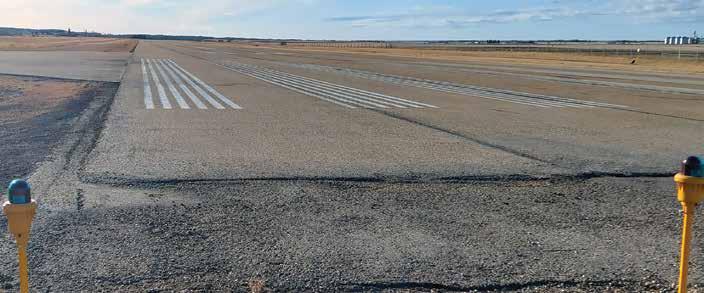


• Recipient of the 2023 AAMA Golden Runway Award in recognition of the efforts made towards the continued success of this airport and airports across Alberta.
• Just 45 minutes north of Grande Prairie, the Spirit River Airport is the ideal location for pilots and industry looking to set up shop.
4712 Hwy 49, Spirit River, AB T0H 3G0 clerk@townofspiritriver.ca 780-864-3998 www.townofspiritriver.ca/location/spirit-river-airport
• The 3000-foot paved runaway is served by a terminal building, AWOS, RNav, new threshold and runway lighting.
• Hangar lots available. For more information contact the Town office.

In the vast expanse of Alberta's landscape, where the sky meets the earth, airports play a crucial role in connecting remote communities, facilitating emergency medical services, and supporting firefighting efforts. However, this dynamic interaction between humans and aviation also brings forth a unique challenge—wildlife control. In Alberta, where pristine lakes and vast wilderness coexist with essential airport facilities, the delicate balance between nature and aviation safety is meticulously maintained by dedicated professionals.
Lac La Biche Airport (CYLB), nestled close to La La Biche Lake, faces a constant challenge from the thousands of gulls that call the nearby bird sanctuary home.
"We have thousands of gulls who will roost in and around the airport,” says Barry Feledichuk, urban airport supervisor at Lac La Biche Airport. “We also have geese and other birds of interest, but our main adversary are gulls and they flock sometimes in the tens of thousands.”
To deter these feathered adversaries, Feledichuk's team employs a variety of tactics. Pyrotechnics, propane-

Top: Deer, coyotes, and even the occasional bear add to the wildlife challenges faced by airports. Inset: Lac La Biche Airport (CYLB), nestled close to La La Biche Lake, faces a constant challenge from the thousands of gulls that call the nearby bird sanctuary home.
powered cannons which emit blasts every few minutes, and kites mimicking birds of prey are some of the nonlethal measures taken to discourage the gulls. However, as Feledichuk emphasizes, the intelligence of the birds often renders these methods less effective over time.
"In worst-case scenarios, where non-lethal is not satisfactory to protect plane strikes, we resort to lethal means," he admits. "Leaving a couple of dead carcasses on the runway seems to be the most effective deterrent.

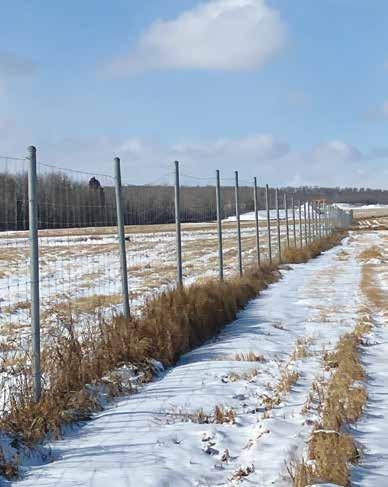
It sends a signal to the birds that this is a threat, and they tend to stay away."
The use of lethal means, such as strategically placing dead carcasses, underscores the gravity of the situation. Feledichuk acknowledges the emotional weight attached to these measures, but stresses their necessity.
"No one wants to see birds put down, but it is a last resort to ensure the safety of people and aircraft," he asserts.
Weather plays a significant role in bird activity, with rain bringing out worms and grasshoppers, enticing the birds to swarm the runway. The airport's proximity to the lake amplifies the challenge, making wildlife management crucial not only for the safety of aircraft, but also for the conservation of the bird sanctuary.
The Lac La Biche Airport also has a game fence, with a few one-way gates in case something does get in so they can find an easy way out most times on their own. The eightfoot-high barrier surrounds the entire airport, minimizing the risk of collisions with large animals. Feledichuk highlights the economic implications of such incidents, with a striking example of the potential damage caused by a plane striking a deer before the fence's installation.
“If a King Air ends up striking a deer, which has happened here before we put up the fence, you will see upwards of $500,000 in damage,” says Feledichuk. “When a plane motor needs to be rebuilt, it’s not a simple fix and that plane is out of service. People’s lives are on the line.”
Jessica Stevenson, EMS manage for provincial air ambulance operations and inter-facility patient transfer strategy for Alberta Health Services (AHS), says that wildlife at airports always remains a concern that pilots need to be aware of and vigilant about. Rural airports that are located away from built-up areas often see numerous wildlife activities, particularly where there is no airport fencing, where airports coexist near bodies of water, where migration pathways intersect with the airport location, and where the airport wildlife deterrence program see limited or no implementation by the airport operator. She adds that thankfully there are no recent reports of AHS air ambulance wildlife encounters causing injury or aircraft damage.
“Pilot training, inflight diligence, and safety management reporting of observed wildlife activities to other pilots help mitigate some of these risks,” says Stevenson.
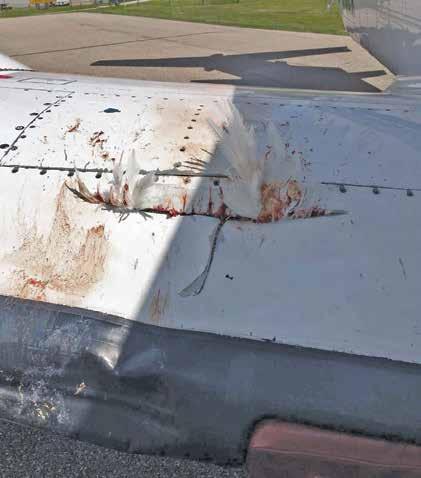
“However, airport operators themselves can go a long way to reducing aircraft and wildlife close calls or incidents.”
Similar challenges are faced by William Stewart, chair of the Alberta Airport Management Association (AAMA) and director of terminal services at the Grande Prairie Airport (CYQU). Stewart oversees a medium regional airport, hosting scheduled carriers like WestJet and Air Canada, as well as medevac and wildfire operations.
Birds, particularly gulls, pose a significant threat to operations at the Grande Prairie Airport. Stewart elaborates on their measures, including pyrotechnics, propane cannons, and even the use of drones.
Stewart emphasizes the need for continuous innovation in wildlife dispersal techniques.
"Keeping up with the latest and greatest in dispersal techniques, like drones, is crucial,” says Stewart. “We strive to stay ahead and utilize the most effective methods available."
Deer, coyotes, and even the occasional bear add to the wildlife challenges faced by airports. Stewart mentions the importance of building relationships with local fish and wildlife officers to navigate the complexities of dealing with protected species. "Strike up a conversation and
build a relationship before you run into a problem. It's essential to have that partnership to address any issues that may arise."
Every airport has different methods of deterring wildlife. The Grande Prairie Airport recently received a permit to use lethal means, highlighting the challenges in obtaining such permissions from authorities. They are restricted to .22-calibre rifles and 12-gauge shotguns, which are used as a measure of last resort.
Stewart says the best way they have found to deter wildlife is to repeat and stay on top of it. He recommends sending out staff regularly with bangers to harass the animals and make the airport as unappealing as possible, which is easy to do if you have full-time staff, which isn’t always the case for smaller airports.
“The ultimate way to eliminate wildlife at your airport is to spend a significant part of your efforts in prevention,” says Stewart. “It’s really important to make it seem that the airport is not a pleasant place to be.”

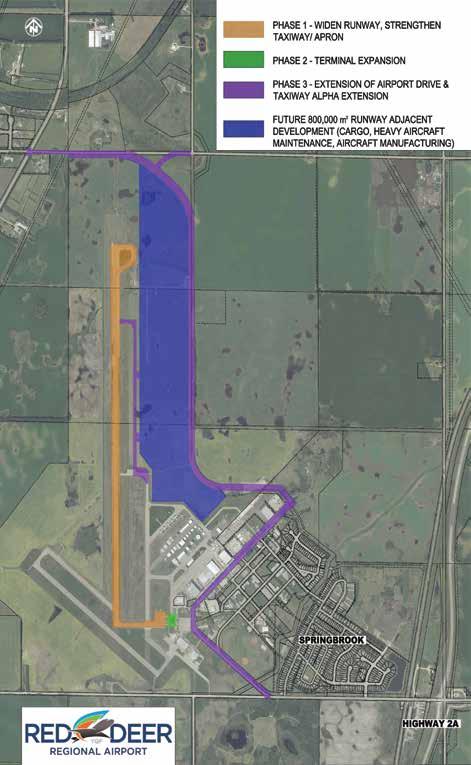
In the heart of Central Alberta, amidst the rolling plains and vibrant communities, lies the Red Deer Regional Airport (YQF). The airport is currently in the midst of a three-phase expansion project that promises to redefine travel in the region.
Phase 1, completed in 2022, included widening the main runway by 50 feet, widening and strengthening Taxiway Bravo, and strengthening the main taxiway allowing for the takeoff and landing of 737 planes.
Phase 2 is well underway with the construction of a new terminal, expected to be completed by July of 2024. The new terminal will add 10,000-square-feet of addition with space for security, a baggage pick-up area, a future customs area, and space to handle the 189 passengers from a full 737-800, signaling a significant leap forward in its capacity and capabilities.
The latest chapter in the airport's journey unfolds with the announcement of Phase 3 of its expansion plan. In a partnership with the Government of Alberta, Red Deer County, and the City of Red Deer, this final phase will see Airport Drive undergo a transformation, providing direct access from Highway 2A and Township Road 374. Not only will this enhance accessibility for travelers, but it will also bolster emergency access to the airport and surrounding areas, prioritizing safety and security for
Improved airfield situational awareness Our LINC
The LINC 360 communication platform offers a 360-degree, real-time view of your airfield. Providing precise control of individual light fixtures, LINC 360 is the communication infrastructure for true two-way data transmittal.



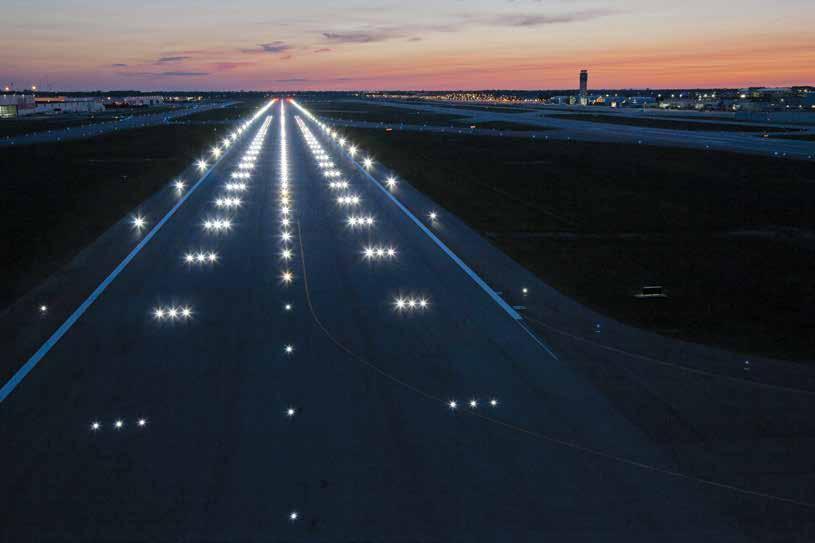
Real-time monitoring from any place on any device
and


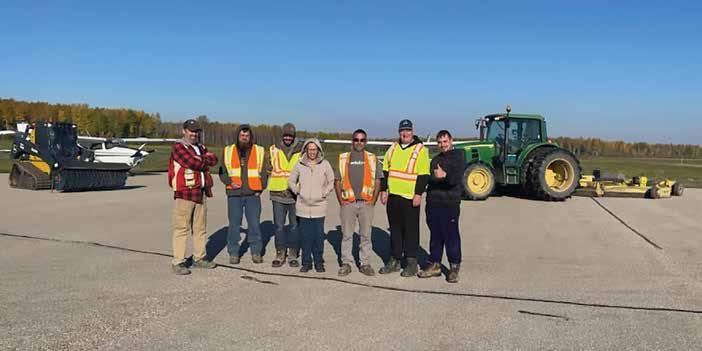
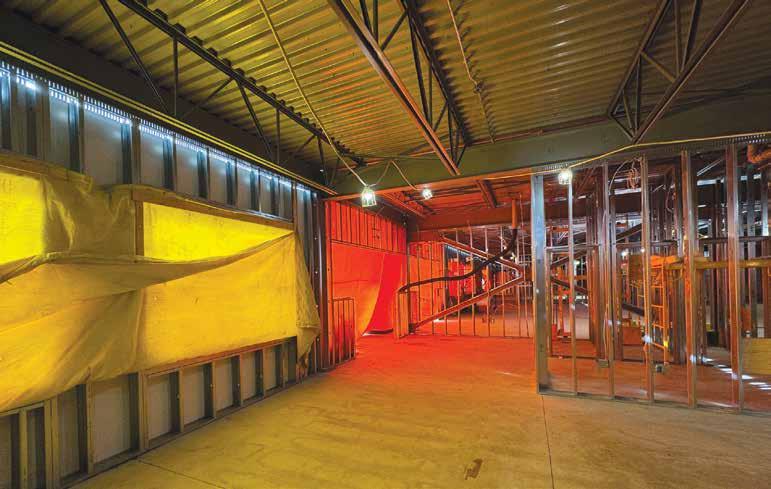
Phase 2 is well underway with the construction of a new terminal, expected to be completed by July of 2024.
With a steadfast commitment to growth, innovation, and accessibility, the airport is poised to become a beacon of progress in the heart of the province.

With its strategic location near major markets and key transportation links in Western Canada, the airport is primed for growth.
all. Together, these phases will not only enhance the airport's capacity, but also improve the efficiency and affordability of travel for businesses and passengers alike.
But the vision doesn't stop there. The land upon which the airport stands represents more than just a runway— it's a gateway to economic prosperity and development. With its strategic location near major markets and key transportation links in Western Canada, the airport is primed for growth. Collaborating with various partners and the expansion of Airport Drive, the airport aims to tap into over 800,000 square metres of prime aviation real estate, paving the way for commercial and industrial activities that will drive the region forward.

This vast expanse of runway-adjacent real estate is poised to accommodate a myriad of operations, catering to both full air services and private aviation ventures. From cargo operations, manufacturing, charter services, airline storage, aerospace endeavours, maintenance facilities, and aviation offices—the possibilities are endless. With ample space and strategic positioning, the Red Deer Regional Airport is positioned to become a hub of activity, serving potential needs of both local
businesses and international enterprises alike.
As the Red Deer Regional Airport continues to forge ahead, the future looks brighter than ever for Central Alberta. With a steadfast commitment to growth, innovation, and accessibility, the airport is poised to become a beacon of progress in the heart of the province.
For more information on the airport expansion project, visit flyreddeer.com.
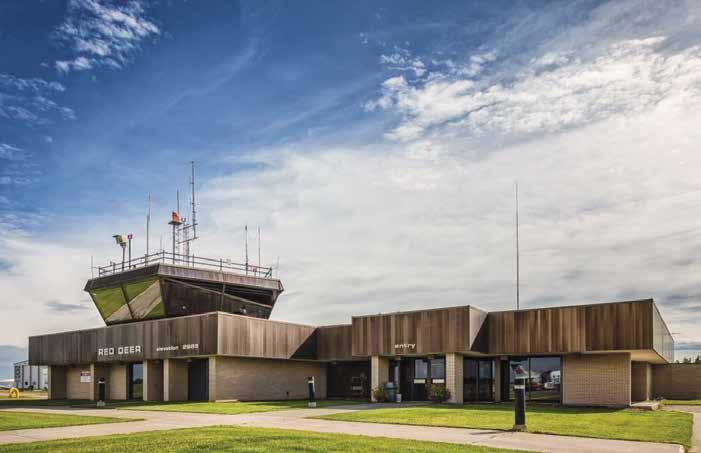


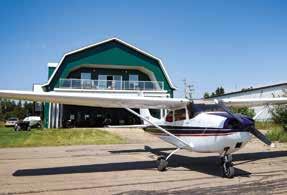


Since the establishment of the Wetaskiwin Regional Airport in 1974, Wetaskiwin has been home to a growing aviation sector, offering opportunities for a variety of industries that support aviation and logistics companies. A certified airport with no landing or runway fees, the airport features a newly paved taxiway, apron and Certified AGN II runway (3,888’ x 100’).

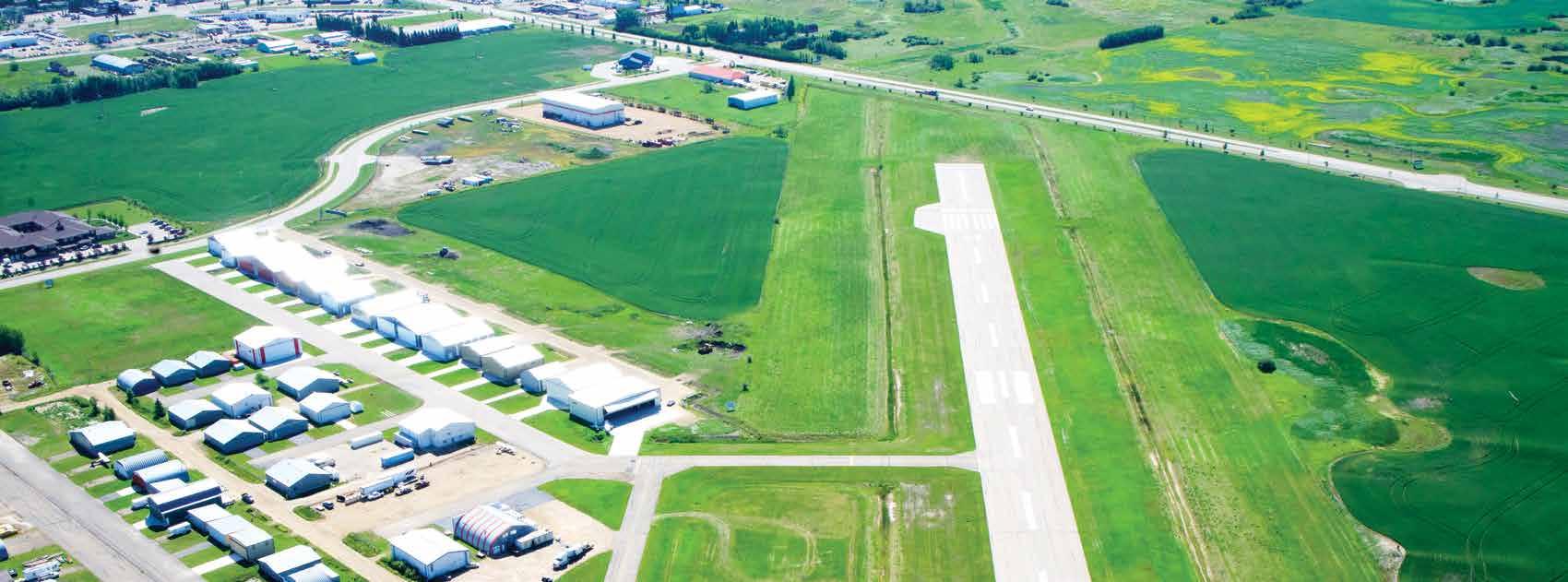

• No landing or runway fees
• Located along Victor 301W (low altitude air highway between Calgary and Edmonton), just outside the Edmonton control zone
• More than 50 aircraft hangers

• More than 10,000 aircraft movements per year
• Ability to own land vs leasing
• Airplane parking and fueling
• 24-hour terminal access



Skyport Properties has created a unique opportunity for hobby aviators.

For 50 years, Wetaskiwin has been a hub of aviation activity, embodying the spirit of flight in rural Alberta. Home to one of the few remaining certified airports in rural Alberta, the Wetaskiwin Regional Airport continues to be a gem of the community that has yet to reach its full potential. With ample opportunities for industrial growth with access to the airfield, the opportunity is ripe for growth, boasting unrivaled access to the skies.
The airport has 90 acres of municipally-owned airfield and
is complemented by private development and an aviation-related industry that supports the sector. From flight training to agricultural aerial application, and from aircraft maintenance to restoration services, the airport sustains a thriving ecosystem of aviation-related industries. It is estimated that the airport contributes $2.8 million in direct labour earnings in addition to the regional economic impact of $1.7 million in gross domestic product.
The economic composition of the community also lends itself to
illustrating further opportunities for the site. Local activity is dominated by metal and machine fabrication (largely supporting the oil and gas sector), agriculture and agribusiness, as well as warehousing and logistics. For businesses with high-priority or time-effective needs, the Wetaskiwin Airport presents a welcome alternative to busier and higher-cost services in larger centres. Offering 24-hour access, no landing or runway fees, public-use aircraft tiedowns and plug ins, and operating outside the controlled airspace of the Edmonton International Airport has
all contributed to make Wetaskiwin an attractive option for those in the sector.
But it’s not only industry that has taken advantage of the opportunities that exist in Wetaskiwin. Skyport Properties has created a unique opportunity for hobby aviators. This development offers 90 freehold lots to be developed in three phases for aviation-related functions that combines personal and business uses. Skyport Properties beckons aviation enthusiasts to blend personal passion with commercial endeavours, fostering a vibrant community of like-minded individuals.
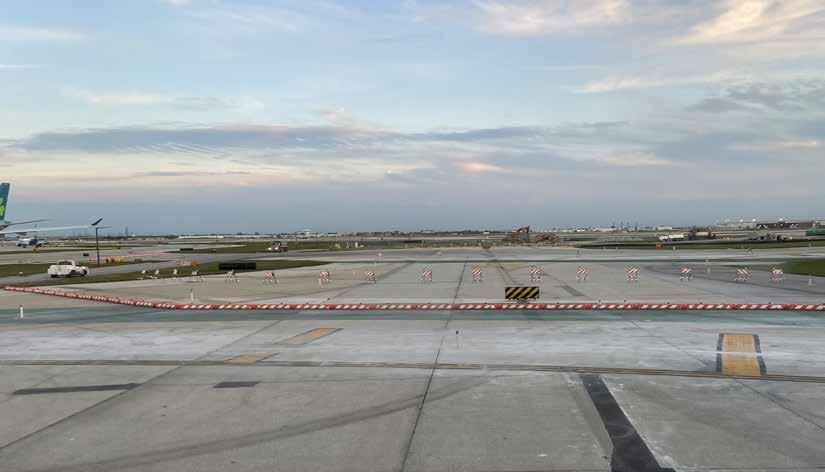
For businesses contemplating expansion or entrepreneurs seeking fertile ground for innovation, Wetaskiwin beckons as a prime destination. The airport stands as a gateway to boundless opportunities, where the sky is not the limit but the beginning of a journey toward success. Explore how Wetaskiwin may be the right location for your next business expansion. We invite you to contact us to discuss how best to create your next success.








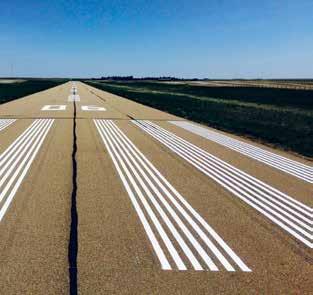



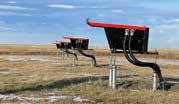






Teachers –
Subscribe to the digital publication, browse the online directory, contact transportation companies, field trip check list.




Parents –
Browse the online directory and subscribe to the digital publication.

Advertisers –
Promote your destination. Includes a free write-up to correspond with the size of ad.
Supporting the Oil & Gas, Tourism, and Agricultural Sectors
QUICK FACTS:
• ICAO Airport Code: CYBF
• Number of Runways: 1
• Runway Length: 1,351 m
• Fuel station (100 & jet) run by Bonnyville Flying Club
REPORTING:


